2019 年 6 月英语四级真题及答案第二套
Part I Writing (30 minutes)
Directions: For this part, you are allowed 30 minutes to write a news report to your
campus newspaper on a visit to a Hope elementary school organized by your Student
Union. You should write at least 120 words but no more than 180 words.
Part Ⅱ Listening Comprehension (25 minutes)
Section A
Directions: In this section, you will hear three news reports. At the end of each
news report, you will hear two or three questions. Both the news report and the
questions will be spoken only once. After you hear a question, you must choose the
best answer from the four choices marked A), B), C) and D). Then mark the
corresponding letter on Answer Sheet 1 with a single line through the centre.
Questions 1 and 2 are based on the news report you have just heard.
1. A) Heavy floods. C) Bad economy.
B) Safety concerns. D) Workers’ strikes.
2.
A) It is competitive with its numerous tourist destinations.
B)
It provides many job opportunities for French people.
C)
It is the biggest concern of the French government.
D)
It plays an important role in the nation’s economy.
Questions 3 and 4 are based on the news report you have just heard.
3.
A) To carry out a scientific survey.
B)
To establish a new research station.
�
C)
To rescue two sick American workers.
D)
To deliver urgent medical supplies.
4. A) The darkness and cold.
C) The biting winds.
B) The heavy snow and fog.
D) The ice all around.
Questions 5 to 7 are based on the news report you have just heard.
5.
A) By tying it to a door handle.
B)
By shaking it back and forth.
6.
A) He has lots of fans on Facebook.
B)
He has rich experience in flying.
7.
A) Spend more time together.
B)
Tell them adventure stories.
C)
With a remote control craft.
D)
With a full-sized helicopter.
C)
He often suffers from toothaches.
D)
He has learned to pull teeth from a video.
C)
Do something fun and creative.
D)
Play with them in a safe place.
Section B
Directions: In this section, you will hear two long conversations. At the end of
each conversation, you will hear four questions. Both the conversation and the
questions will be spoken only once. After you hear a question, you must choose the
best answer from the four choices marked A), B), C) and D). Then mark the
�
corresponding letter on Answer Sheet 1 with a single line through the centre.
Questions 8 to 11 are based on the conversation you have just heard.
8.
A) To confirm an urgent appointment.
B)
To collect a package from the woman.
C)
To ask the woman to sign a document.
D)
To arrange the delivery of a package.
9.
A) She is doing shopping.
B)
She is visiting a friend.
C)
She is not at home.
D)
She is not feeling well.
10. A) He will be off duty the whole day.
B)
He will be working somewhere else.
C)
He will have to have his car repaired.
D)
He will be too busy to spare any time.
11. A) Sign her name.
B)
Confirm online.
C)
Pay a small fee.
D)
Show up in person.
Questions 12 to 15 are based on the conversation you have just heard.
12. A) Vacation in Italy.
C) Throw a farewell party.
�
B) Study abroad.
D) Go to a fashion show in Milan.
13. A) Quite sleepy.
C) Rather depressed.
B) Very excited.
D) Nearly exhausted.
14. A) He has to attend a party.
C) He has to make a presentation.
B) He has to meet a friend. D) He has to finish an assignment.
15. A) Say goodbye to the woman at the airport. C) Drive the woman to the airport.
B) Meet the woman at the Black Cat Cafe.
D) Have lunch with the woman.
Section C
Directions: In this section, you will hear three passages. At the end of each passage,
you will hear three or four questions. Both the passage and the questions will be
spoken only once. After you hear a question, you must choose the best answer from
the four choices marked A), B), C) and D). Then mark the corresponding letter on
Answer Sheet 1 with a single line through the centre.
Questions 16 to 18 are based on the passage you have just heard.
16. A) It has kept growing over the centuries.
B)
Its top is hidden in clouds of volcanic smoke.
C)
Its height changes with each volcanic eruption.
D)
It has a recorded history of 1,500 years.
17. A) They are now a tourist destination.
B)
They attract a lot of migrating birds.
C)
They provide shelter for the farmers.
They make good fields for farming.
D)
18. A) They nest on the volcano’s slopes.
�
B)
They feed on certain small mammals.
C)
They compete with each other for food.
D)
They match large mammals in strength.
Questions 19 to 21 are based on the passage you have just heard.
19. A) He is self-employed. B) He is a career advisor.
C)
He studies talent. D)
He owns a magazine.
20. A) Doing what they like best.
B) Loving the work they do.
C) Making no excuses for failures.
D) Following their natural instinct.
21. A) It does not come to anything without hard work.
B)
It may prove to be quite different from hard work.
C)
It is a natural gift only some special people can possess.
D)
It does not come to you until something special happens.
Questions 22 to 25 are based on the passage you have just heard.
22. A) It is a bit difficult to learn.
B)
It was popular in New Zealand.
C)
It is a traditional type of ballet.
D)
It evolved in the mid-1970s.
23. A) She wanted her to be a ballet dancer.
B)
She used to be a ballet dancer herself.
�
C)
She hated to see her idling about.
D)
She was too busy to look after her.
24. A) After she started teaching English.
B)
Before she left for New Zealand.
C)
When she moved to New York city.
D)
Once she began to live on her own.
25. A) It has renewed her passion for life.
B)
It has made her happy and energetic.
C)
It has helped her make new friends.
D)
It has enabled her to start a new career.
Part Ⅲ Reading Comprehension
(40 minutes)
Section A
Directions: In this section, there is a passage with ten blanks. You are required
to select one word for each blank from a list of choices given in a word bank following
the passage. Read the passage through carefully before making your choices. Each
choice in the bank is identified by a letter. Please mark the corresponding letter
for each item on Answer Sheet 2 with a single line through the centre. You may not
use any of the words in the bank more than once.
Just because they can’t sing opera or ride a bicycle doesn’t mean that animals
don’t have culture.
There’s no better example of this than killer whales. As one of the most
26
predators (食肉动物),killer whales may not fit the 27
cultured
creature. However, these beasts of the sea do display a vast range of highly
of
a
28
behaviors that appear to be driving their genetic development.
�
The word “culture” comes from the Latin “colere”, which 29 means “to
cultivate.” In other words, it refers to anything that is 30 or learnt, rather than
instinctive or natural. Among human populations, culture not only affects the way
we live, but also writes itself into our genes, affecting who we are. For instance,
having spent many generations hunting the fat marine mammals of the Arctic, the
that help them
Eskimos of Greenland have developed certain genetic 31
digest and utilize this fat-rich diet, thereby allowing them to 32
their
cold climate.
Like humans,
colonized
different
killer
whales
in
have
a
range
of
33
across
the
34
globe,occupying every ocean basin on the planet, with an empire
that
from pole to pole. As such,different populations of killer whales
have had to learn different hunting techniques in order to gain the upper hand over
their local prey (猎物). This, in turn, has a major effect on their diet, leading
scientists to
35that the ability to learn population-specific hunting methods
could be driving the animals’ genetic development.
A) acquired
I) image
B) adaptations
J) literally
C) brutal
K) refined
D) deliberately
L) revolves
E) expressed
F) extends
G) habitats
H) humble
M) speculate
N) structure
O) thrive
Section B
Directions: In this section, you are going to read a passage with ten statements
attached to it. Each statement contains information given in one of the paragraphs.
Identify the paragraph from which the information is derived. You may choose a
paragraph more than once. Each paragraph is marked with a letter. Answer the
questions by marking the corresponding letter on Answer Sheet 2.
Living with parents edges out other living arrangements for 18- to 34-year-olds
A) Broad demographic (人口的) shifts in marital status, educational attainment and
�
employment have transformed the way young adults in the U.S. are living, and a new
Pew Research Center analysis highlights the implications of these changes for the
most basic element of their lives – where they call home. In 2014, for the first
time in more than 130 years, adults ages 18 to 34 were slightly more likely to be
living in their parents’ home than they were to be living with a spouse or partner
in their own household.
B)
This turn of events is fueled primarily by the dramatic drop in the share of
young Americans who are choosing to settle down romantically before age 35. Dating
back to 1880, the most common living arrangement among young adults has been living
with a romantic partner, whether a spouse or a significant other. This type of
arrangement peaked around 1960, when 62% of the nation’s 18-to 34-year-olds were
living with a spouse or partner in their own household, and only one-in-five were
living with their parents.
C)
By 2014, 31.6% of young adults were living with a spouse or partner in their
own household, below the share living in the home of their parent(s) (32.1%). Some
14% of young adults lived alone, were a single parent or lived with one or more
roommates. The remaining 22% lived in the home of another family member, such as
a grandparent, in-law or sibling (兄弟姐妹), a non-relative, or in group quarters
like college dormitories.
It’s worth noting that the overall share of young adults living with their
D)
parents was not at a record high in 2014. This arrangement peaked around 1940, when
about 35% of the nation’s 18- to 34-year-olds lived with mom and/or dad (compared
with 32% in 2014). What has changed, instead, is the relative share adopting
different ways of living in early adulthood, with the decline of romantic coupling
pushing living at home to the top of a much less uniform list of living arrangements.
E)
Among young adults, living arrangements differ significantly by gender. For men
ages 18 to 34, living at home with mom and/or dad has been the dominant living
arrangement since 2009. In
2014, 28% of young men were living with a spouse or partner in their own home, while
35% were living in the home of their parent(s). Young women, however, are still more
likely to be living with a spouse or romantic partner (35%) than they are to be living
with their parent(s) (29%).
In 2014, more young women (16%) than young men (13%) were heading up a household
F)
without a spouse or partner. This is mainly because women are more likely than men
to be single parents living with their children. For their part, young men (25%)
are more likely than young women (19%) to be living in the home of another family
member, a non-relative or in some type of group quarters.
�
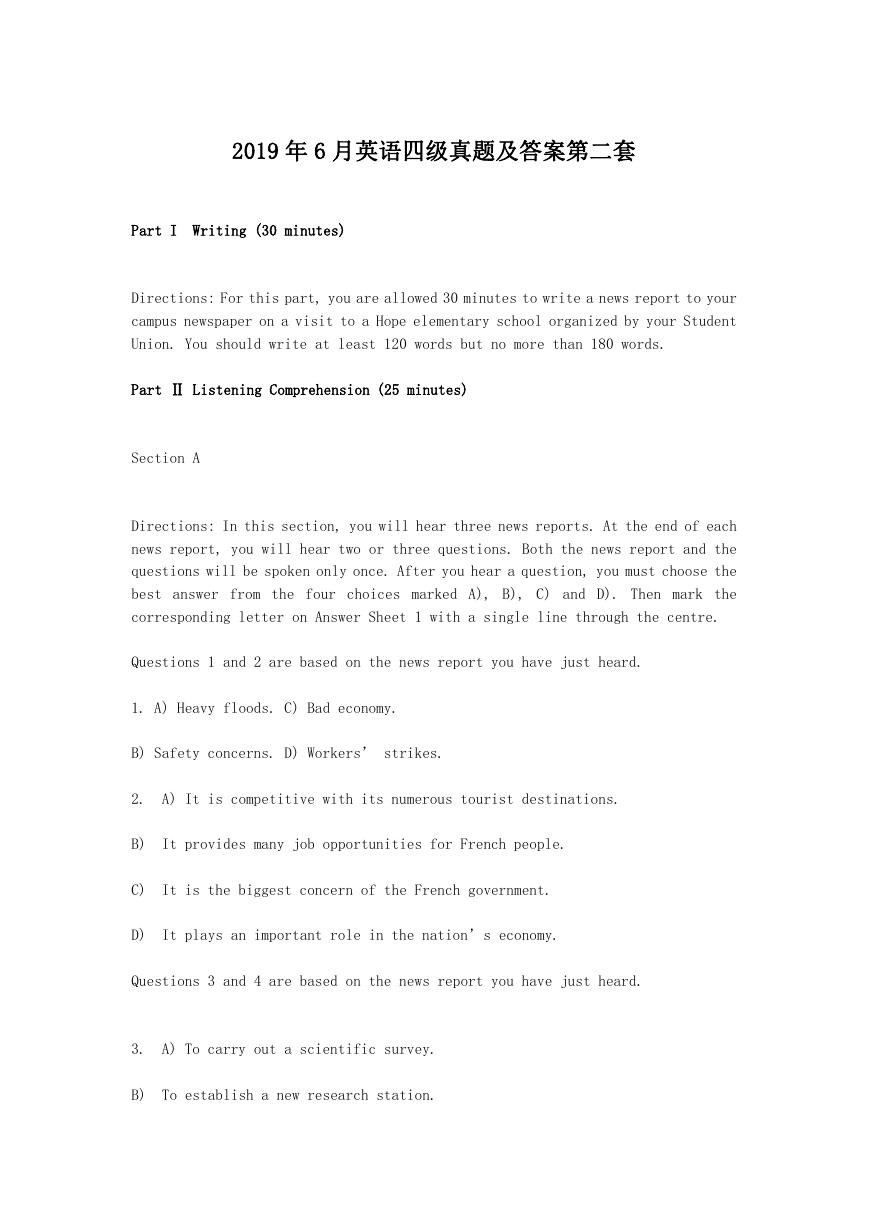
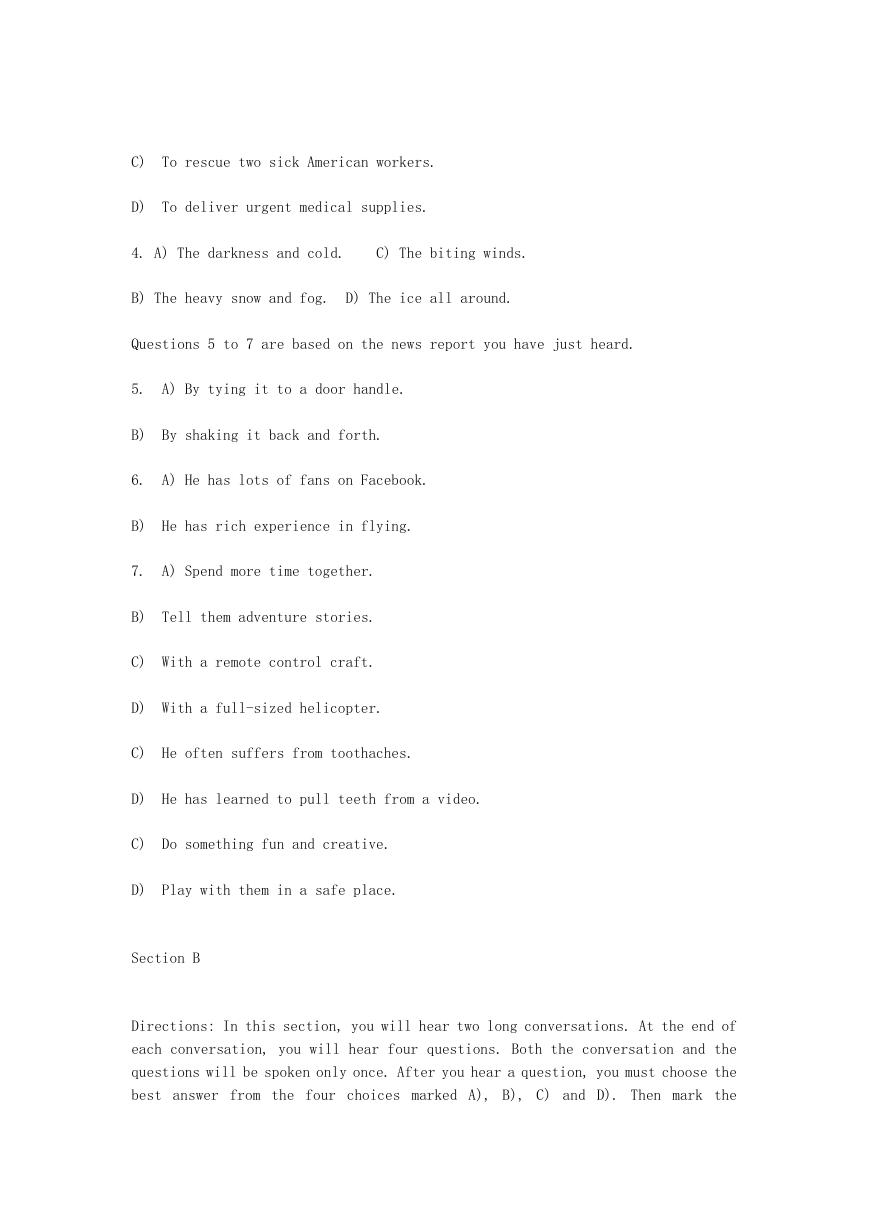

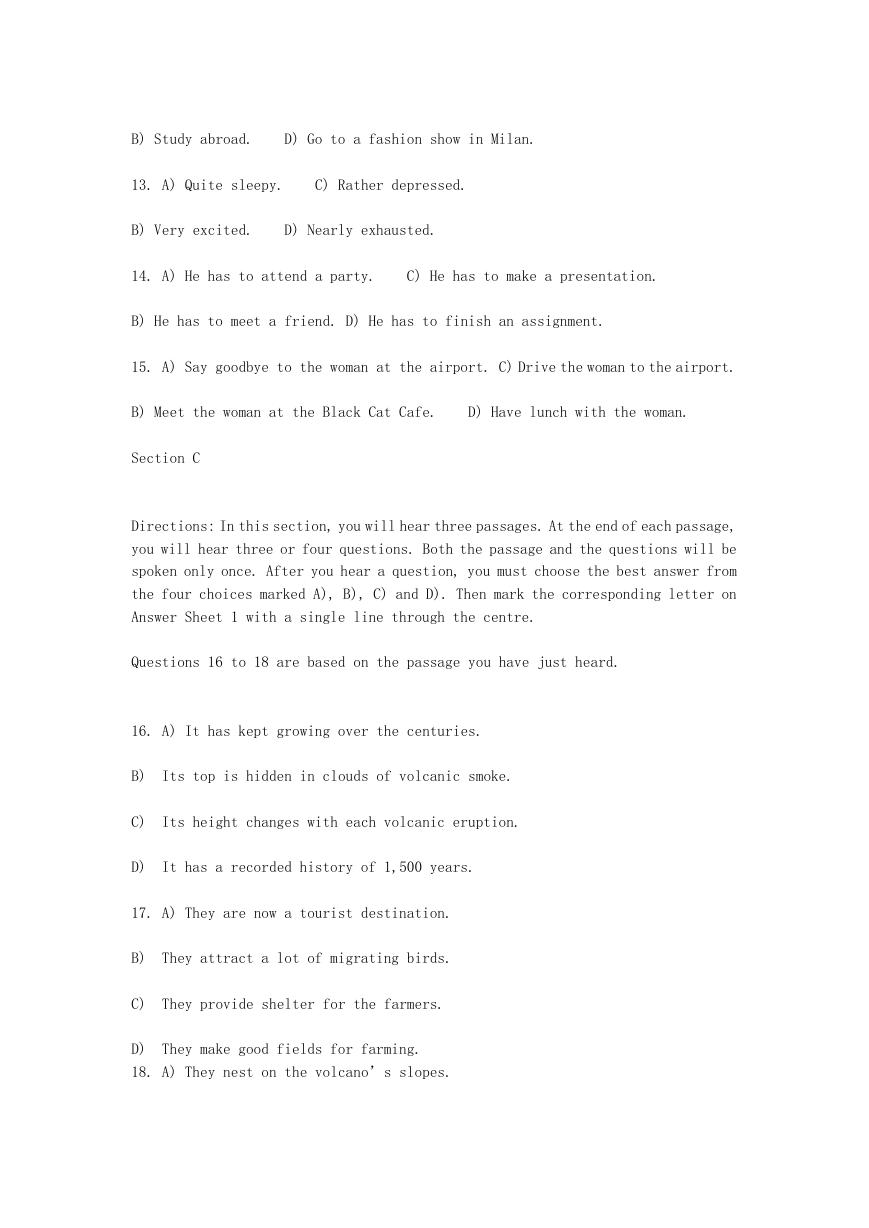
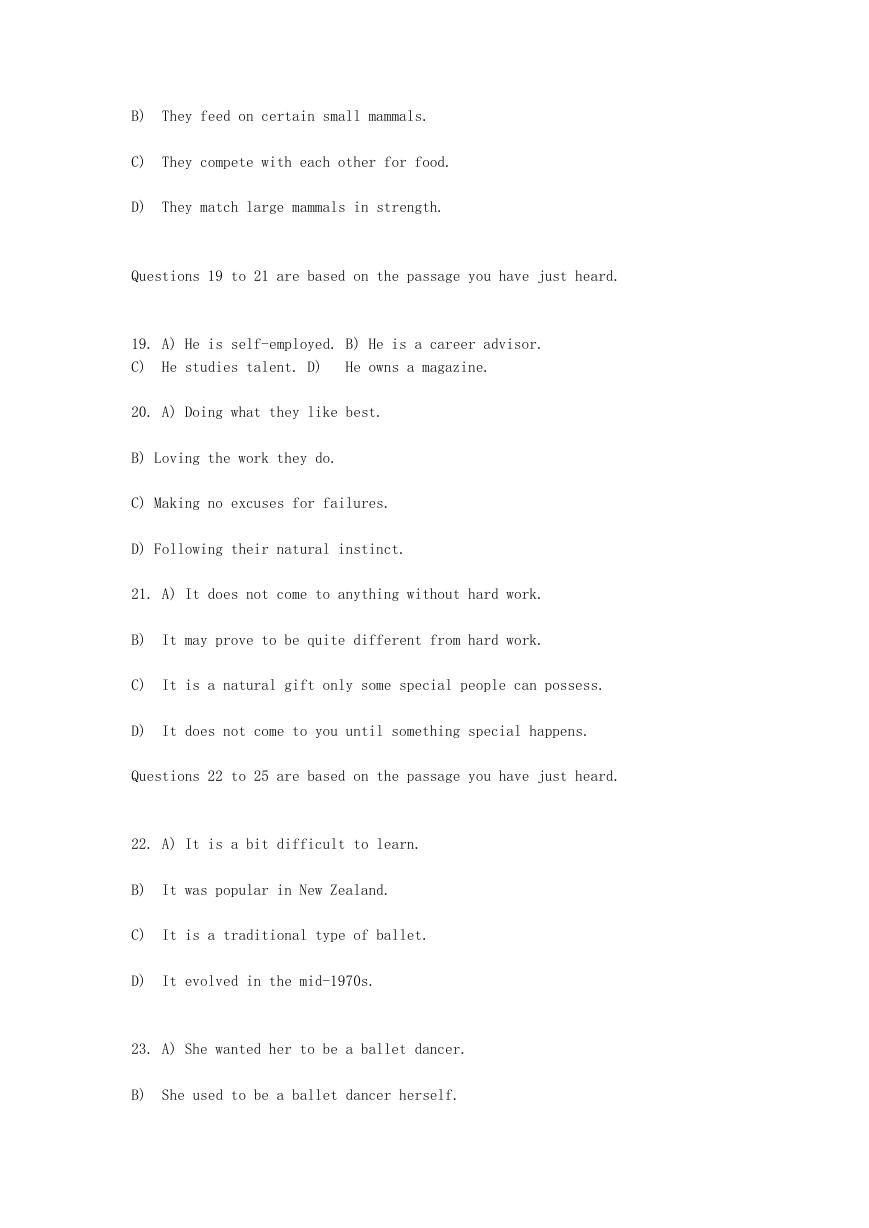
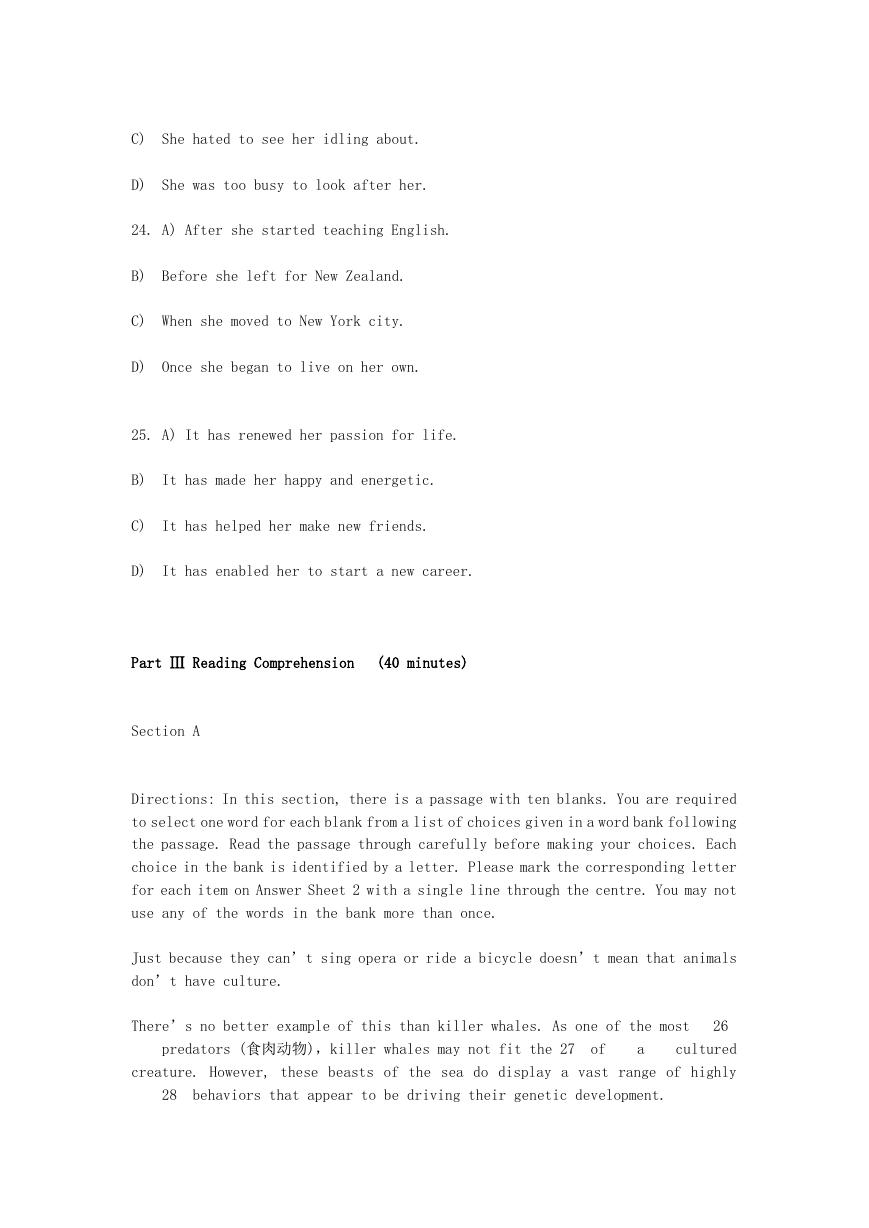
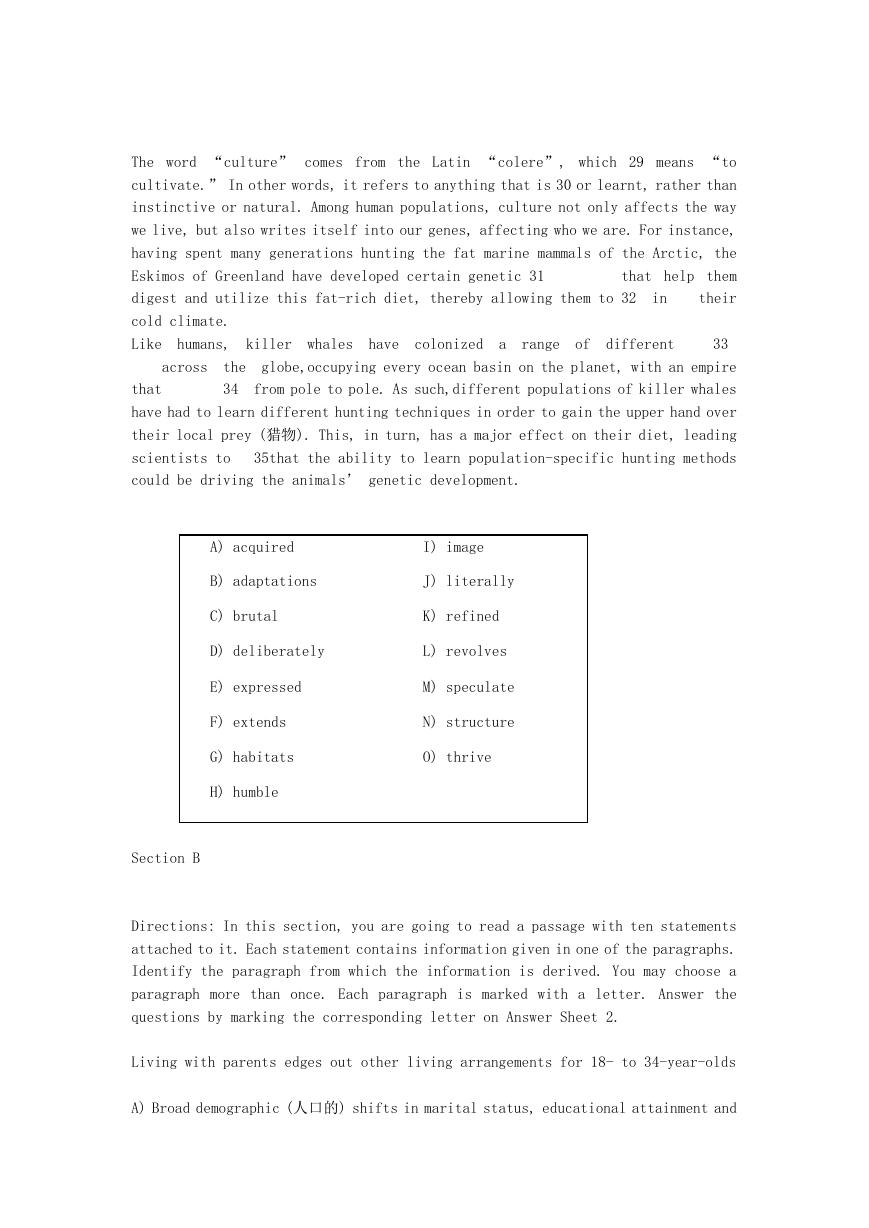
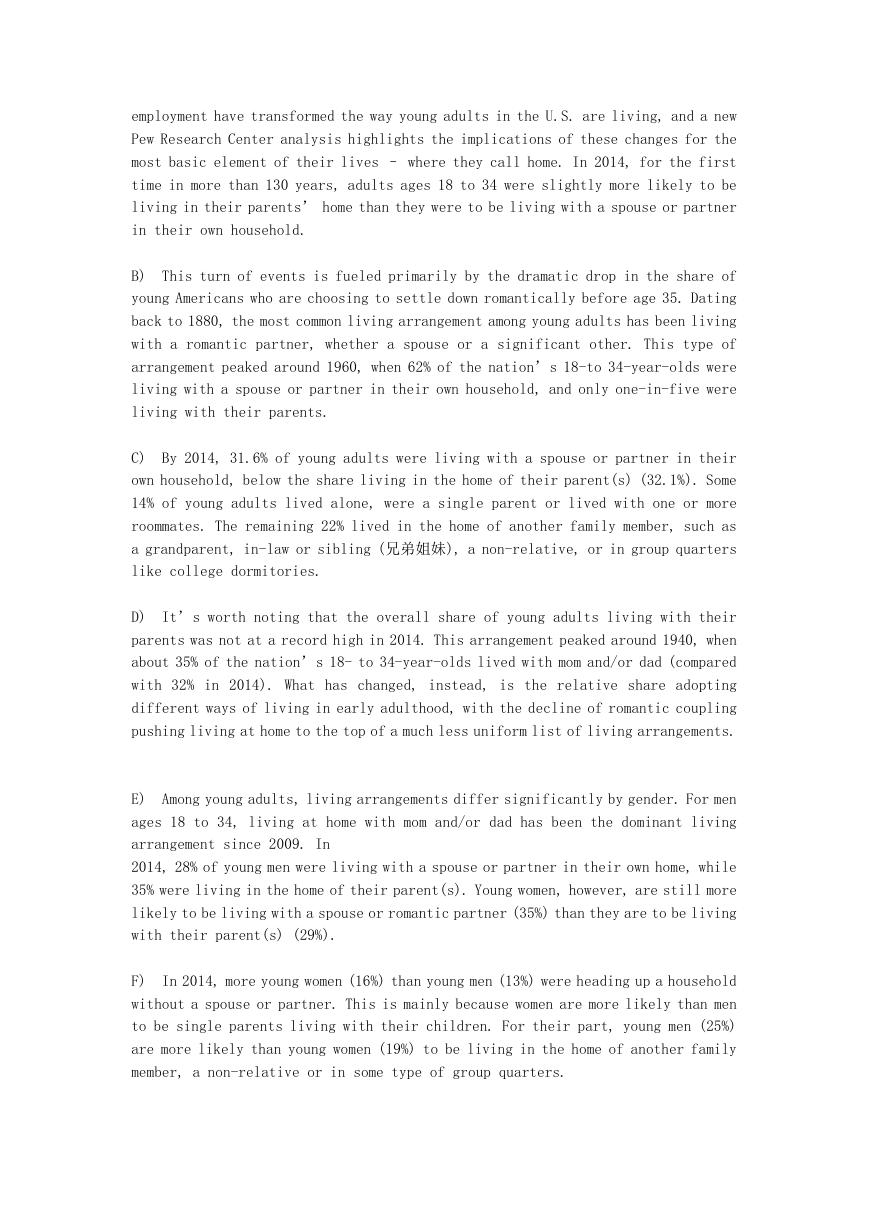








 2023年江西萍乡中考道德与法治真题及答案.doc
2023年江西萍乡中考道德与法治真题及答案.doc 2012年重庆南川中考生物真题及答案.doc
2012年重庆南川中考生物真题及答案.doc 2013年江西师范大学地理学综合及文艺理论基础考研真题.doc
2013年江西师范大学地理学综合及文艺理论基础考研真题.doc 2020年四川甘孜小升初语文真题及答案I卷.doc
2020年四川甘孜小升初语文真题及答案I卷.doc 2020年注册岩土工程师专业基础考试真题及答案.doc
2020年注册岩土工程师专业基础考试真题及答案.doc 2023-2024学年福建省厦门市九年级上学期数学月考试题及答案.doc
2023-2024学年福建省厦门市九年级上学期数学月考试题及答案.doc 2021-2022学年辽宁省沈阳市大东区九年级上学期语文期末试题及答案.doc
2021-2022学年辽宁省沈阳市大东区九年级上学期语文期末试题及答案.doc 2022-2023学年北京东城区初三第一学期物理期末试卷及答案.doc
2022-2023学年北京东城区初三第一学期物理期末试卷及答案.doc 2018上半年江西教师资格初中地理学科知识与教学能力真题及答案.doc
2018上半年江西教师资格初中地理学科知识与教学能力真题及答案.doc 2012年河北国家公务员申论考试真题及答案-省级.doc
2012年河北国家公务员申论考试真题及答案-省级.doc 2020-2021学年江苏省扬州市江都区邵樊片九年级上学期数学第一次质量检测试题及答案.doc
2020-2021学年江苏省扬州市江都区邵樊片九年级上学期数学第一次质量检测试题及答案.doc 2022下半年黑龙江教师资格证中学综合素质真题及答案.doc
2022下半年黑龙江教师资格证中学综合素质真题及答案.doc